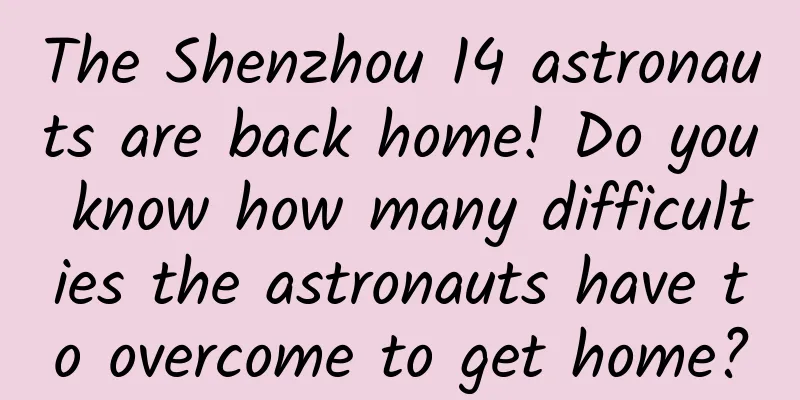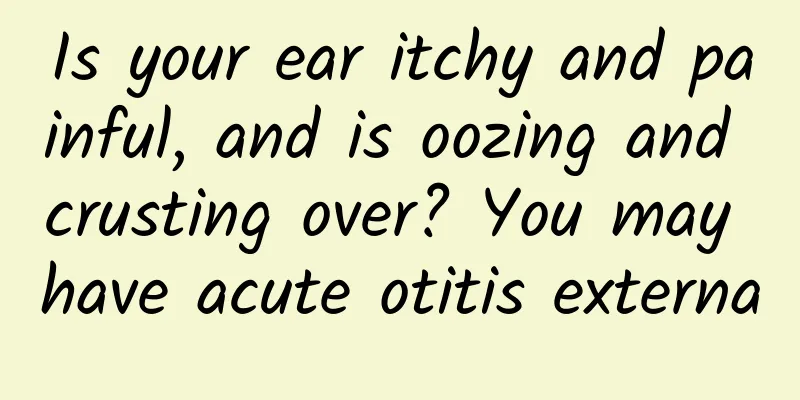Are you ready to watch the Perseid meteor shower under the big moon?

|
The Perseid meteor shower, which has the most comfortable observation conditions among the three major meteor showers in the northern hemisphere, will reach its peak on August 13. According to the forecast of the International Meteor Organization, the peak period of this year's Perseid meteor shower is expected to occur between 9:00 and 10:00 am on August 13th, Beijing time, with a ZHR of 100. The peak period is during the daytime in my country, so for my country, the best time to observe the Perseid meteor shower is from the rising of the radiant point at 21:00 on the evening of August 12th and 13th to the dawn of the next day. Unfortunately, the full moon on August 12 this year seriously affected observations before and after the maximum period. The bright moonlight would drown out the slightly fainter meteors, causing the original number of dozens visible per hour to become very small, making this year's midsummer night meteor show dim. However, the Perseids is the meteor shower with the highest percentage of fireballs throughout the year. If the weather is fine, even under a big moon, there is a good chance of seeing fireballs from the Perseids streaking across the sky. If the weather conditions in your area are good, I suggest you don't give up directly, but go out and give it a try, maybe you will get a fireball. Facing a big moon, how to appreciate the Perseid meteor shower scientifically and correctly? The following popular science post may have what you want to know: 01 What is the Perseid meteor shower? The Perseids, Quadrantids and Geminids are known as the three major meteor showers in the northern hemisphere. They are named because their radiant point is in the constellation Perseus. The parent body of the Perseids is the comet Swift-Tuttle (109P/Swift-Tuttle). From July 17 to August 24 every year, the Earth will move near its orbit. Meteors falling near its orbit will impact the Earth's atmosphere at high speed under the influence of the Earth's gravity, generating high temperatures and light, thus bringing us the gorgeous Perseids. Perseid meteor shower cause source: Internet 02 What are the characteristics of the Perseid meteor shower? 1. The active period of the Perseid meteor shower is in summer. Compared with the other two meteor showers, the weather conditions for observation are more comfortable, the flow rate is larger and relatively stable throughout the year. 2. The meteors in the group are fast. The meteors of the Perseid meteor shower enter the atmosphere at a speed of up to 59 kilometers per second, which is a high-speed meteor. 3. The proportion of bright meteors in the group is relatively high, and occasionally there are brighter fireballs. 4. Meteors are rich in colors, often green or reddish, and the traces left after burning are obvious. Meteor trail source: Internet 03 What is the flow rate of the Perseid meteor shower this year? We use the Zenith Hourly Rate (ZHR) to describe the possible number of meteors in a meteor shower. It is defined as the maximum number of meteors that an observer can see per hour when the observing conditions are very good (visual limiting magnitude is 6.5) and the radiant point is directly above the observer's head (according to the International Meteor Organization's forecast, the ZHR of the Perseid meteor shower this year is 100). Due to the influence of weather, city lights, the location of the radiant point, meteor brightness, etc., the actual number of meteors that can be observed per hour will be much less than this number. This year's big moon will have a great impact on the Perseid meteor shower, and those faint meteors will basically be invisible. Fortunately, there are many bright meteors in the Perseid meteor shower, and we can still see their traces under the moonlight. Although we may not see many, what is certain is that the probability of seeing meteors is definitely higher than usual (according to relevant forecasts, we should still be able to see a few meteors an hour). 04 Do I need a telescope to observe the Perseid meteor shower? Speaking of meteor showers, there is a misunderstanding that you need to use telescopes and other special equipment to observe meteor showers. In fact, you don't need a telescope to observe meteor showers. The best observation equipment is our eyes, so we just need to open our eyes and watch the meteors streak across the night sky. Although you don't usually need a telescope to observe meteor showers, this year, the editor recommends that you bring a telescope or binoculars with you. Because the number of meteors under the big moon is too small, it is also a good choice to set up a telescope to watch the moon. Image source: Internet 05 How to observe more comfortably? The correct way to watch a meteor shower is to lie down. This way you don't have to keep your head tilted back. It is also more comfortable to lie down, and the sky area you can see is wider. So it is recommended that you bring a moisture-proof mat, sleeping bag and other outdoor equipment, lie on a slightly dry ground and wait for the meteors to pass by. You can also drink some coffee, eat some snacks, and chat for a while to refresh yourself, so as not to fall asleep while waiting (this is especially important this year. After all, the presence of the big moon greatly reduces the number of meteors, and you may wait for a long time without seeing any meteors). It is best to wear long sleeves and long pants when going out for observation. Firstly, the temperature is relatively low late at night in summer, especially in the desolate wilderness. Secondly, it can prevent various flying animals from attacking your skin. You can also set up a tent and take a rest when you are tired, or if the weather is bad or you are too sleepy, you can just go into the tent and take a nap. The best posture for enjoying meteor showers - lying down 06 How to choose an observation location? After preparing the outdoor equipment, we need to choose a suitable observation site. When choosing an observation site, you should choose a place with a wide field of view and less light and air pollution to observe with the naked eye. The urban area is not suitable for observation due to the strong light pollution, so if you want to see more meteors, it is best to choose a place with less light pollution such as the suburbs. This is actually the same as the situation with our big moon. Too strong light will cover most of the meteors, so it is necessary to find a place with less light pollution for observation. 07 Where should we look under the big moon? On the night of the maximum, Perseus is located in the northeast of the sky. Although it is called the Perseid meteor shower, it is only because the radiant point is located in Perseus, and it looks like all the meteors are scattered from Perseus. In fact, meteors have nothing to do with constellations, they just have the same direction visually, and according to the principle of meteor generation, there are fewer meteors near the radiant point. Under normal circumstances, we should start watching from about 20 degrees away from the radiant point. This year, due to the presence of the big moon, in addition to leaving the radiant point, we also need to stay as far away from the big moon as possible. Meteor distribution, with the radiation point in the middle Source: Internet 08 What should we pay attention to when observing? Since suitable observation sites are mainly in suburbs or mountains and other places with less light pollution, first of all, do not act alone. Watching meteor showers is a group observation activity, and you must drive there as a group, and pay attention to traffic and personal safety; second, the best time to observe is often late at night. If conditions permit, you can find an open and safe place such as a farmhouse or manor. Do not observe in dangerous areas such as the seaside where the tide is about to rise, the edge of a cliff, in the grass, or on an unprotected roof; third, August is summer, and we should also take protective measures against mosquitoes, moisture, snakes, etc. 09 Can I take photos of meteor showers under a big moon? In the past, when we photographed meteor showers, we just had to set up the camera and set it to automatic shooting. In order to capture more meteors, we tried to choose a large aperture and high sensitivity when setting the shooting parameters, and then we would just keep shooting in one direction. However, due to the presence of the big moon this year, we need to adjust our shooting plan, such as avoiding the moon as much as possible, lowering the parameters to prevent overexposure, etc. Because of the interference of the moon, the number of photos we may take may be much less. Of course, it is not impossible to wait for a fireball (it depends on your luck). Perseid meteor shower photographed by Qingdao Observatory Author of this article: Shandong Astronomical Society Unit member: Qingdao Observatory, Purple Mountain Observatory, Chinese Academy of Sciences WeChat ID: qd_gxt Tel: 0532-82828405 Weibo: @Purple Mountain Observatory Qingdao Observatory Official website: http://qdgxt.kepu.net.cn/ |
<<: He was forced by a fly to do such a thing? It stumped millions of junior high school students!
>>: What? Ants can actually "farm"? !
Recommend
Millions of netizens watched the "strange fish" being caught, and many responded
Recently, Ruzhou City, Pingdingshan City, Henan P...
Jack Dorsey: Apple Pay is a great experience, Square will fully support it in 2015
[[123142]] According to CNN, Square plans to supp...
How to formulate an operating strategy for a product?
When it comes to the work content of operations, ...
Tao Hong’s personal profile: What should I do if the Baidu snapshot for website promotion and optimization updates slowly or does not update at all?
When a search engine enters a web page, it will b...
It’s a difficult situation for Master Zhou. Is there any hope for Qihoo 360?
On May 6, there were a lot of press conferences i...
Winners and losers after Apple tweaked iOS 14 privacy settings
According to reports, Apple is expected to adjust...
Weekly crooked review: Let me give you tenderness with my chopped-off hands
This Wednesday, I spent the seventh day of the de...
Wearable health devices: The future looks bright
Just by wearing a bracelet, you can know how many...
Peak season has arrived! "Sugarcane during the Qingming Festival is more poisonous than snakes", urgent reminder: don't eat it!
Audit expert: Wang Guoyi Postdoctoral fellow in N...
How about Pampers diapers: How does Chengdu SEO optimization use external links to attract traffic?
Many webmasters encounter this problem: the SEO o...
How does Baidu search promotion charge? Introduction to charging standards!
How does Baidu search promotion charge? Baidu sea...
WeChat VS TikTok: Analysis report on 4 major categories
WeChat VS TikTok: Analysis report on four major c...
How to operate Douyin well? 6 strategies and 7 key points
I missed Weibo in 2011, missed WeChat public acco...
This highly poisonous plant feeds at least 800 million people. You must have eaten it.
A 17th-century natural history painting of cassav...









